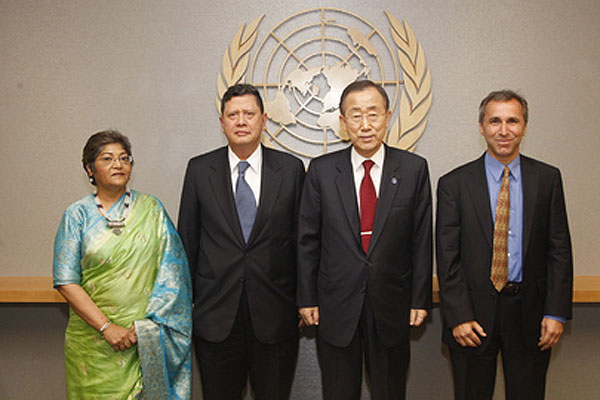The Island newspaper continues to publish leaks from the report produced by the Panel appointed by the UN Secretary General to look into post-war accountability in Sri Lanka. Groundviews has contextualised in detail the Executive Summary and Parts 1, 2, 3, 4, 5 and 6 of the leaks.
The Island published today Part 7 which deals with credible allegations of war crimes by the Sri Lankan Government and its armed forces that include the deliberate targeting of civilians in the so-called No Fire Zones (NFZs) and wholly inadequate measures to protect civilians from shelling. As the Panel succinctly notes, “… the Government’s instructions for civilians to move into the NFZs, only to be subsequently shelled by the SLA, disregarded this rule and in fact amounted to a cynical manipulation of it.”
As before, we provide context and background information to frame these highlights. Much of the context in this story is actually part of that which was given in previous stories covering other aspects of the leaked UN report. Links to these stories with their related content have been provided.
“In terms of paragraph (1)(a) of Common Article 3, i.e. violence to life and person, in particular murder of all kinds, mutilation, cruel treatment and torture, credible allegations point to the murder of civilians in widespread shelling of an indiscriminate nature by the SLA. These include attacks in the three No Fire Zones. ”
“The credible allegations also point to murder insofar as information, such as the Channel 4 videos, indicates that the SLA executed unarmed LTTE cadre who were taken into custody, particularly during the final days of the war.”
“The credible allegations indicate that the Government of Sri Lanka did not respect the fundamental principle of distinction. The Government stated that its military operations in the Vanni yielded zero civilian casualties, when credible estimates of civilian casualties are in the tens of thousands; it also provided vastly low estimates of civilians trapped in the conflict zone.”
“International humanitarian law prohibits attacks on civilians and civilian objects. Attacks may be directed only against military objects and combatants (Rule 7, ICRC Study)…. In regard to the presence of the LTTE in the proximity of civilians in the NFZs, international tribunals, including the ICTY, have clarified that the ban on attacks against civilians protects a population that is “predominantly civilian”, and “the presence within the civilian population of individuals who do not come within the definition of civilian [i.e. combatants] does not deprive the population of its civilian character.”
“As for any argument that the SLA did not intend to make the civilian population the object of attack, but that its attacks were aimed at the LTTE, an attack remains unlawful if it is conducted simultaneously at a lawful military object and an unlawfully-targeted civilian population.”
“In addition, with respect to hospitals, the law is clear that the possible presence of wounded LTTE in some hospitals does not transform those hospitals into legitimate military targets – they remain protected civilian objects.”
“It is thus clear to the Panel that credible allegations point to a violation of the ban on attacks directed against civilians insofar as the SLA, whether deliberately or recklessly, attacked civilians situated in the NFZs, as well as other civilian objects, such as hospitals and other humanitarian objects, including food distribution lines. In addition, the widespread shelling that is credibly alleged, notably across the succession of NFZs where the civilian population went at the Government’s urging, also points to a violation of the customary law rule that prohibits attacks, the primary purpose of which is to spread terror among civilians (Rule 2, ICRC Study).”
“While the Panel does not have information on all incidents, credible allegations suggest numerous violations of this provision insofar as the attacks on the NFZs were broadly disproportionate to the military advantage anticipated from such attacks. The Government’s repeated declaration that it had ceased using heavy weapons in these NFZs points to awareness that such usage could be considered disproportionate. Broadly speaking, once both the civilian population and the LTTE were confined to the very limited spaces of the second and third NFZs, the LTTE was no longer mobile as an armed force, and more precise means to defeat the LTTE than barrages of widely-spread artillery and mortar attacks could and should have been employed in order to ensure respect for international humanitarian law.”
“The leaflets that were periodically distributed in the Vanni did not constitute sufficient precautions for specific attacks. In addition, the Government’s instructions for civilians to move into the NFZs, only to be subsequently shelled by the SLA, disregarded this rule and in fact amounted to a cynical manipulation of it.”
